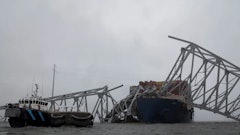Recovering project costs is critical to the success and, in some cases, the survival of your business.
Because equipment expenses can represent as much as 50% of job costs, you need to understand what those expenses are and ensure they’re covered during the bid process. According to “Controlling Equipment Costs -- 3 Steps to Nailing Down These Often Unexpected Expenses” (The Edge, Construction Edition, Summer 2003, Blackman Kallick, Bartelstein, LLP), one way to factor equipment costs into bids is to develop a “rental rate” for each type of machine.
The first step is to determine your equipment ownership costs. Start with the initial price of the machine, then calculate an annual, monthly and even hourly depreciation charge. You can do this by taking the actual cost of the equipment (i.e., $50,000) and subtracting the salvage value (i.e., $10,000) you anticipate at the end of the machine’s useful life. Divide the result, or depreciation base, by its expected useful life (i.e., $40,000 ÷ 5,000 hours = $8/hour).
Do the same type of calculation with insurance premiums. Add together the initial purchase price plus insurance costs and finance charges you expect to incur during the equipment’s life. Then divide that figure by the total hours of expected use.
Your next step is to calculate operating costs. The key to accurate calculations is to account for all operating expenses, including:
Note that any major repair expenses should be capitalized over the equipment’s remaining life rather than factored into the operating costs.
Once you’ve calculated annual ownership and operating costs, it’s time to develop a rental rate structure for the equipment. Many contractors use a combination of ownership and operating costs when developing rates. For example, if the ownership cost for a piece of equipment is $20 per hour and the operating cost is $35 per hour, your total cost would be $55 per hour. Build in some profit and your hourly rate might be $75 per hour. You can then charge the job using the hourly rate (based on actual hours of operation or hours on the jobsite), or charge a set daily rate.
Of course, good recordkeeping is needed to accurately develop and assess rates. If your records are incomplete, contact the equipment manufacturers to obtain cost data that can be used until you have a clearer picture of your actual costs. Once you have actual cost data available, you can then adjust rates accordingly.



























